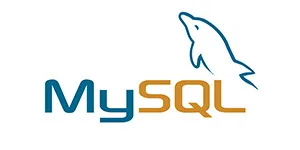I have a problem with MySQL and/or DBforge.
I would like to import a schema using an .sql file that DBforge generated for me by comparing 2 databases.
The file DBforge created for me contains characters with accents (éèêàâ…), so far nothing abnormal, I’m French and the stored procedures I need to import are written in French.
However, when I want to execute this .sql file in my database in a PowerShell :
Get-Content $SQLfile -Encoding UTF8 |
mysql --password=$($target.password) -h $($target.host) -P $($target.port) -u $($target.user) --default-character-set utf8mb4 -f -D $db 2> $tempErrorFile
All special characters are replaced by ? despite the fact that my .sql file is in UTF8 and has accents.
Here’s my call to dbforge to generate the .sql file for me (although I doubt that’s where the problem is):
&$($DBFORGE_PATH + 'dbforgemysql.com') /schemacompare /source connection:$SOURCE_LINE /target connection:$TARGET_LINE /ExcludeComments:Yes /ExcludeDependencies:Yes /IncludeUseDatabase:Yes /filter:$selectedFilter /sync:$SQL_DBFORGE /log:$LOG_DBFORGE_FILE
Here is my call to mysql with the file generated by dbforge :
&cmd /c "mysql --password=$($target.password) -h $($target.host) -P $($target.port) -u $($target.user) --default-character-set=utf8mb4 -f -D $db < $SQLfile 2> $tempErrorFile"
I tried another way:
Get-Content $SQLfile -Encoding UTF8 |
mysql --password=$($target.password) -h $($target.host) -P $($target.port) -u $($target.user) --default-character-set=utf8mb4 -f -D $db 2> $tempErrorFile

 Question posted in
Question posted in 

2
Answers
Update, i find the solution !
in reality, PowerShell was at the root of the problem. I'm still not sure why, but this command line :
forces special characters to become "?".
all you had to do was take the 2nd command and add `" around the path of the .sql file, i.e. :
If someone could explain to me why CMD works in this case but PowerShell does not.
tl;dr
Execute
$OutputEncoding = [System.Text.UTF8Encoding]::new()before your command to ensure that Windows PowerShell sends UTF-8 tomysqlThe reason that your
cmdsolution worked is that its<and>redirection operators function as raw byte conduits. Therefore, your input file’s content was (correctly) passed as-is tomysql, whereas in PowerShellGet-Contentfirst decoded the file content into .NET strings, and, on sending the result tomysqlvia the pipeline, re-encoded it based on$OutputEncoding(incorrectly, in Windows PowerShell).As an aside:
>to save an external program’s output to a file – see this answer for details, which also explains PowerShell’s decoding and re-encoding behavior in more detail.Background information:
Your problem isn’t specific to the CLI you’re using (
mysql), it is rooted in a fundamental PowerShell behavior:When PowerShell sends data to an external (native) program via the pipeline, it uses the character encoding stored in the
$OutputEncodingpreference variable.Unfortunately, Windows PowerShell uses ASCII(!) encoding by default, meaning that non-ASCII characters (characters outside the 7-bit Unicode range, such as
é) aren’t supported and replaced with literal?characters, which is what you saw.Therefore, you must (temporarily) assign a (BOM-less) UTF-8 encoding to
$OutputEncodingbefore calling your command:PowerShell (Core) 7+ defaults to UTF-8.
When PowerShell receives data from external programs (via their stdout and stderr streams), PowerShell uses the encoding stored in
[Console]::OutputEncodingto decode the data (into .NET strings).Unfortunately, both PowerShell editions defaults to the legacy OEM code page determined by the active legacy system locale (aka language for non-Unicode programs), e.g.
437on US-English systems.While many CLIs honor this code page when producing their output, modern CLIs increasingly do not, given that such (fixed single-byte) code pages limit you to 256 characters.
node, the Node.JS CLI, is a prominent example: it uses UTF-8 unconditionally. Others, such asmysql, allow you to request UTF-8 on demand.Thus, extra effort is needed[1] in order to properly decode UTF-8 output from external programs:
[1] Except if you’ve configured your system to use UTF-8 system-wide, but note that doing so has far-reaching consequences – see this answer.